I was walking through the Tower Hill memorial garden last Sunday when I noticed a small cross resting on one of the allegorical figures, just above the dolphin’s head …
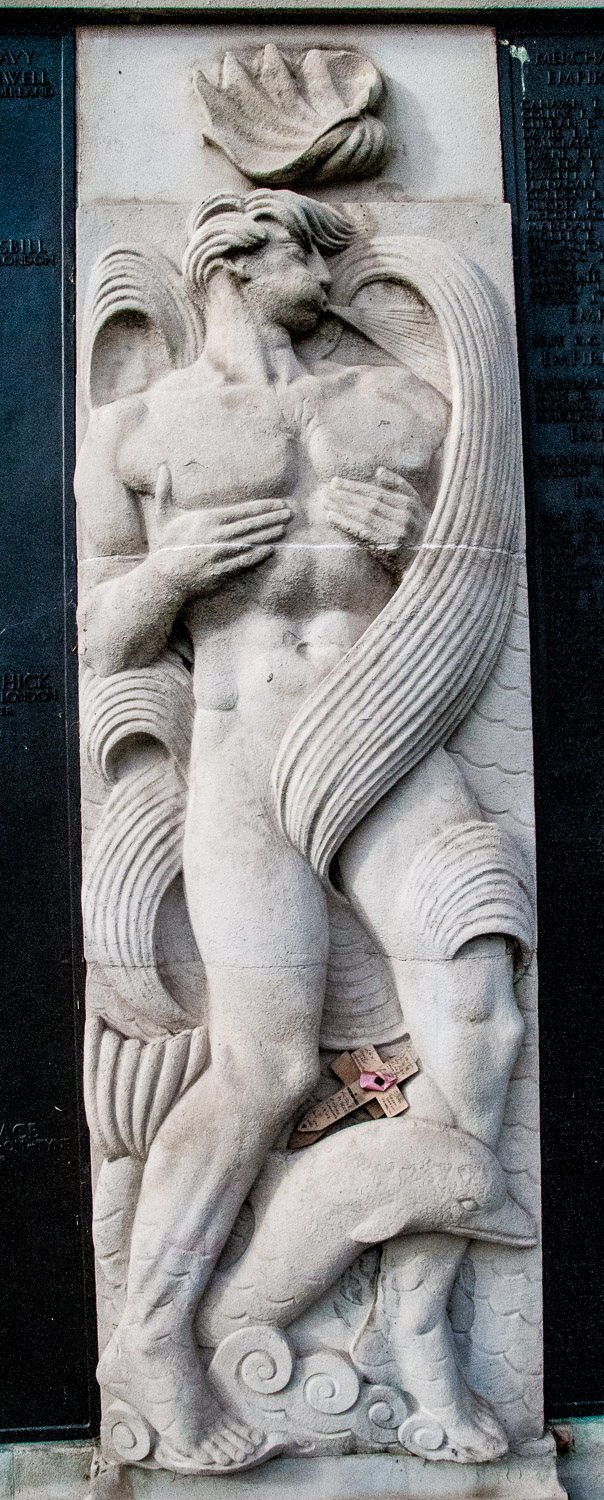
Here it is in close up …
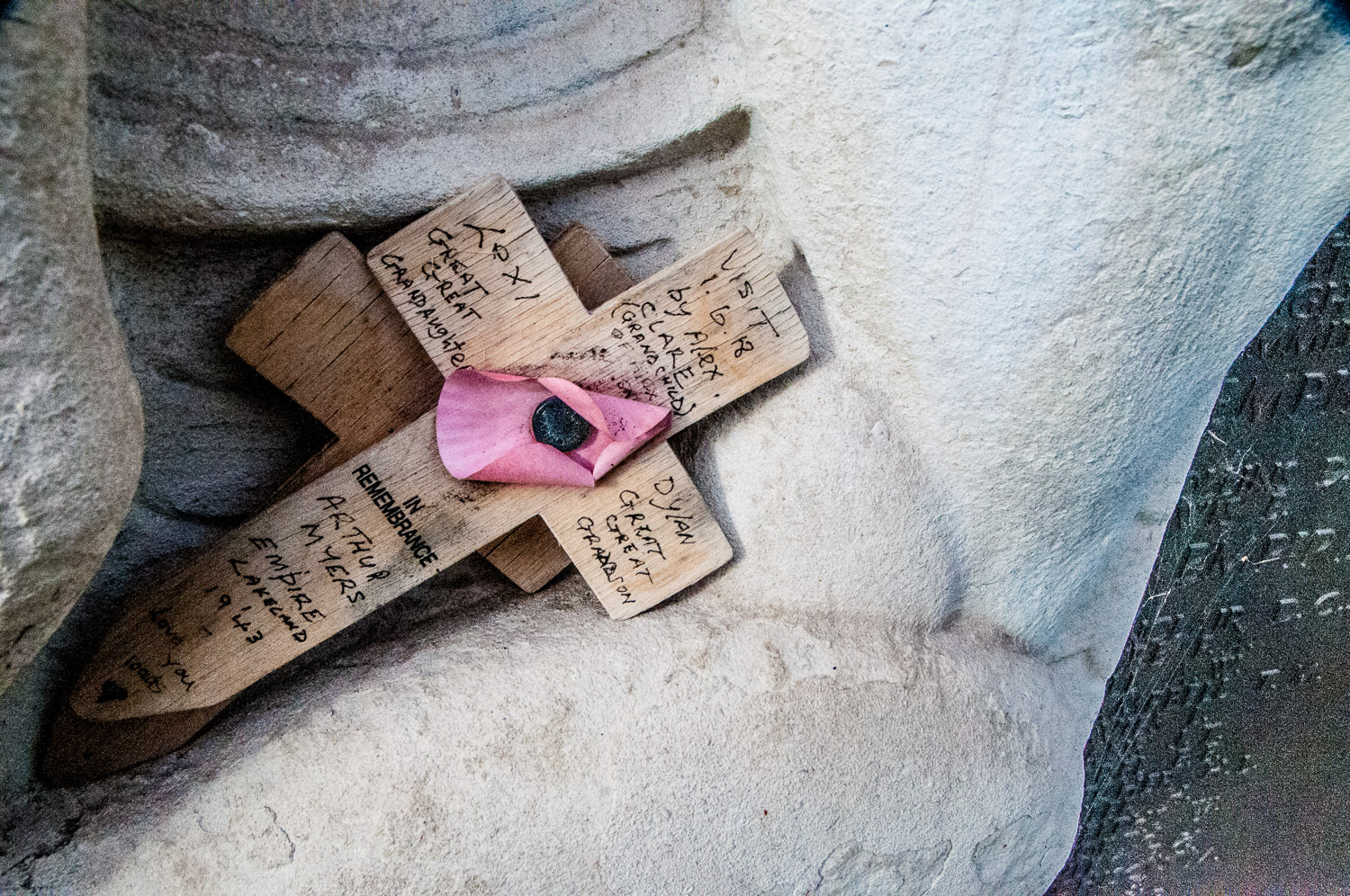
How wonderful. Arthur Myers remembered by a grandchild and two great, great grandchildren. His ship, the Empire Lakeland, was sunk by a U Boat on 11 March 1943.
I also noticed when I was there that, with Remembrance Sunday approaching, wreaths and other little crosses are beginning to appear.
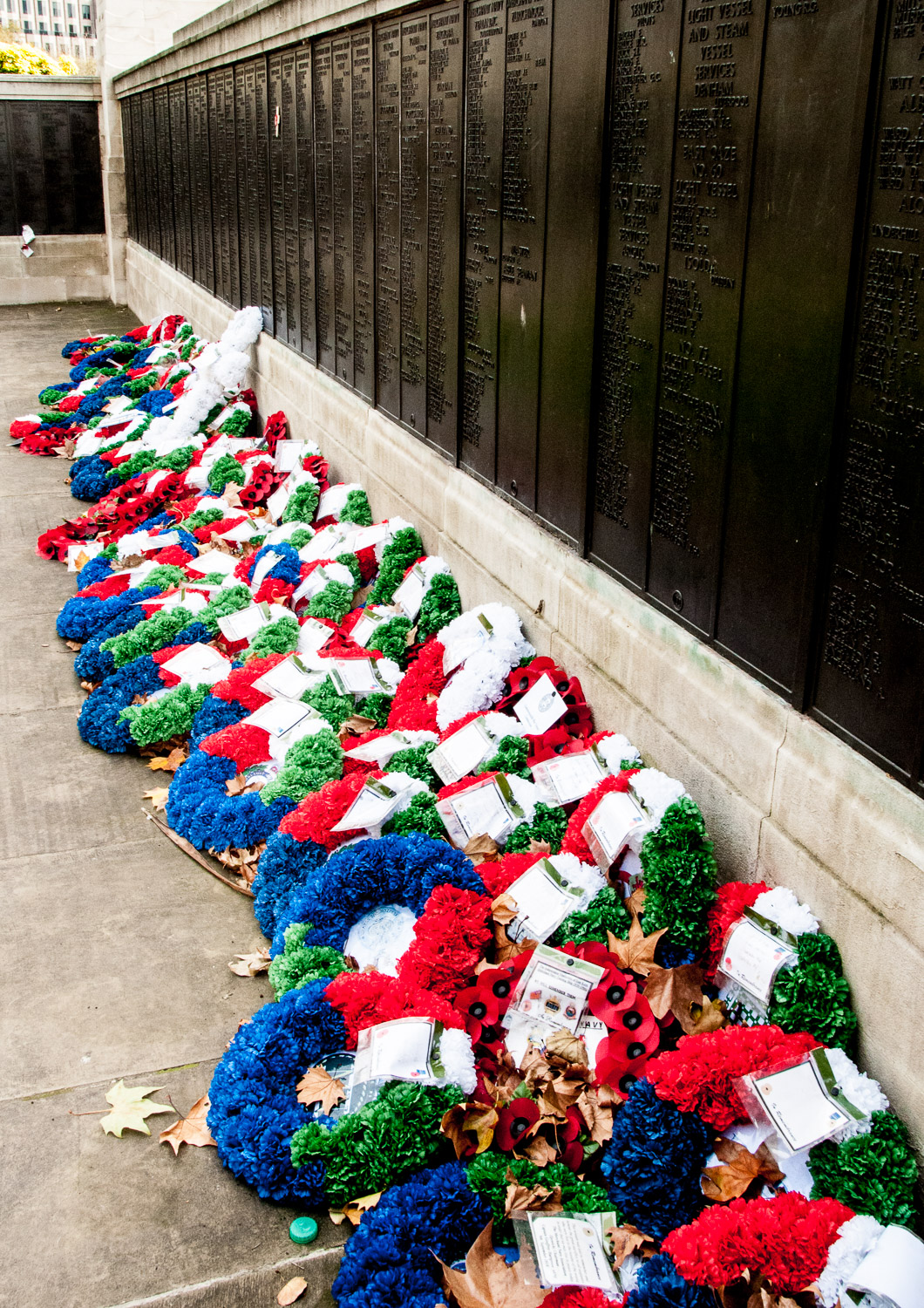
Many are from institutions …
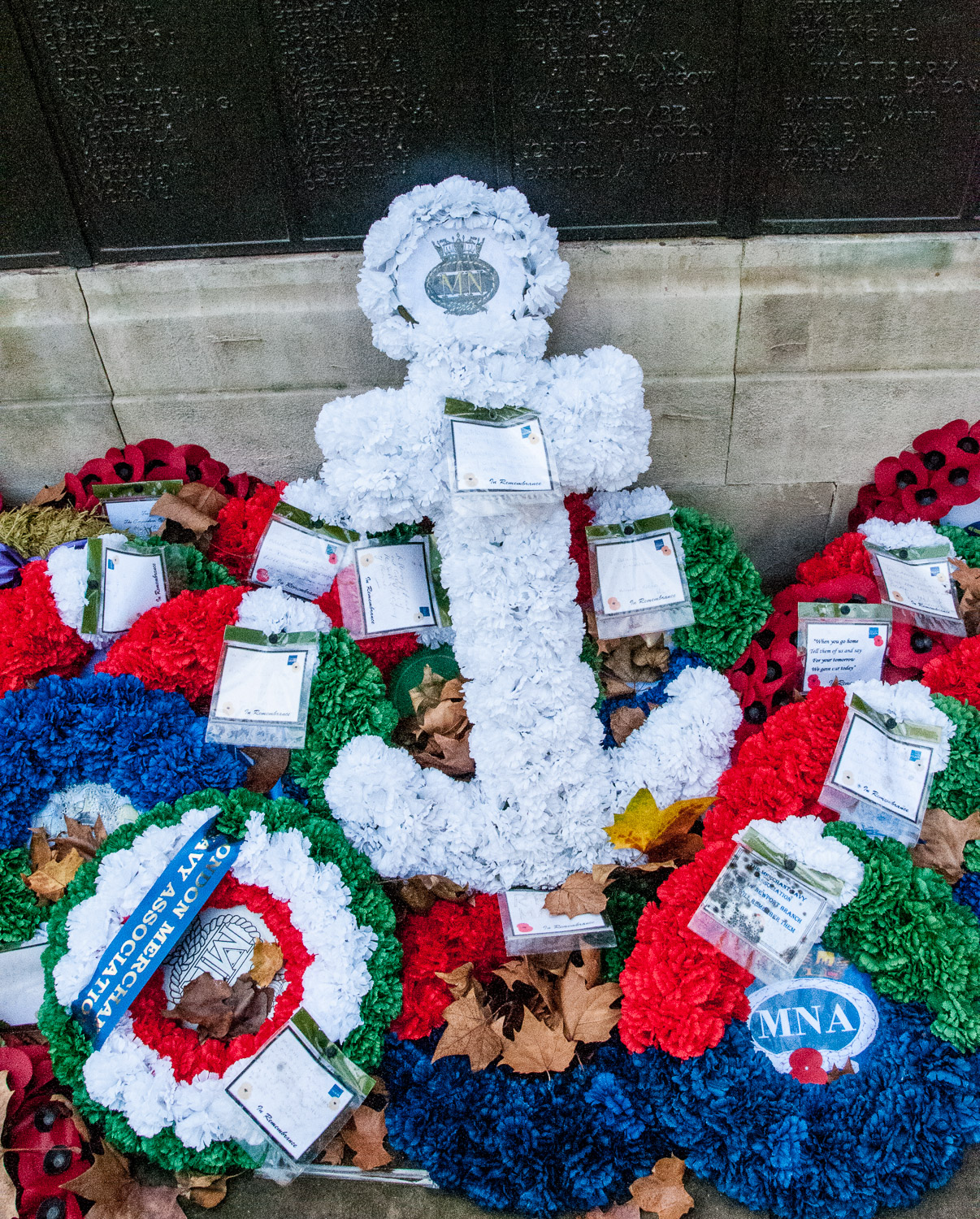
… and some in respect of just one vessel …
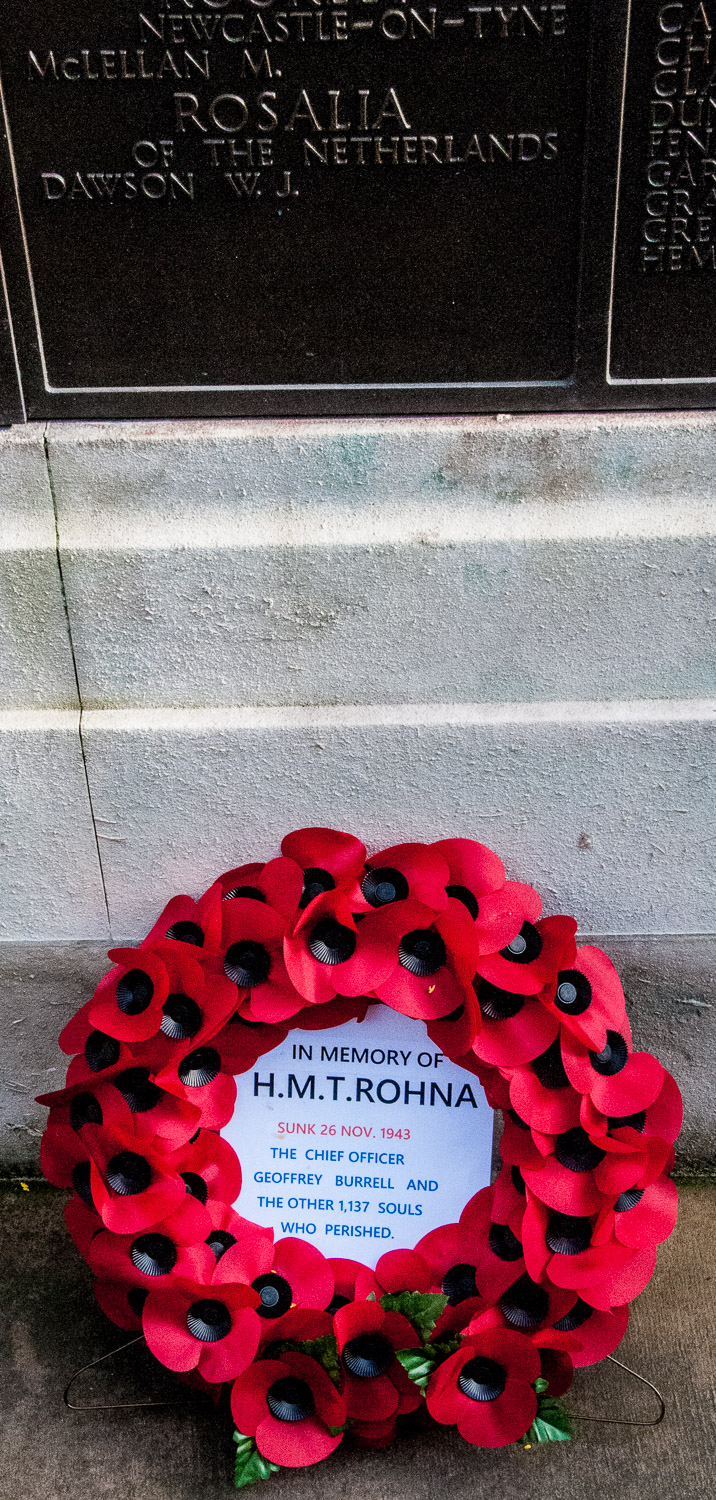
HMT stands for His Majesty’s Transport. The Rohna was requisitioned as a troop ship in 1940 and sunk in the Mediterranean in November 1943. Most of those killed were American troops.
And so on to my next two memorials, the first being the National Submarine War Memorial on Victoria Embankment (EC4Y 0HJ). Although able to hide when submerged, once struck the vessels were often unable to rise to the surface and became effectively underwater coffins. In the First World War fifty four boats were lost and with them the lives of 138 officers and 1,225 men. At the inauguration in 1922 Rear Admiral Sinclair, the Chief of the Submarine Service, reminded those present that, during the Great War …
The number of those killed in the Submarine Service was greater in proportion to its size than any other branch of His Majesty’s fighting forces … one third of the total personnel.
In November 1959 new panels commemorating Second World war losses were unveiled by Rear Admiral B W Taylor.
Wright and Moore, writing for the 20th Century Architecture website, describe the memorial as a complex mixture of narrative and symbolism …
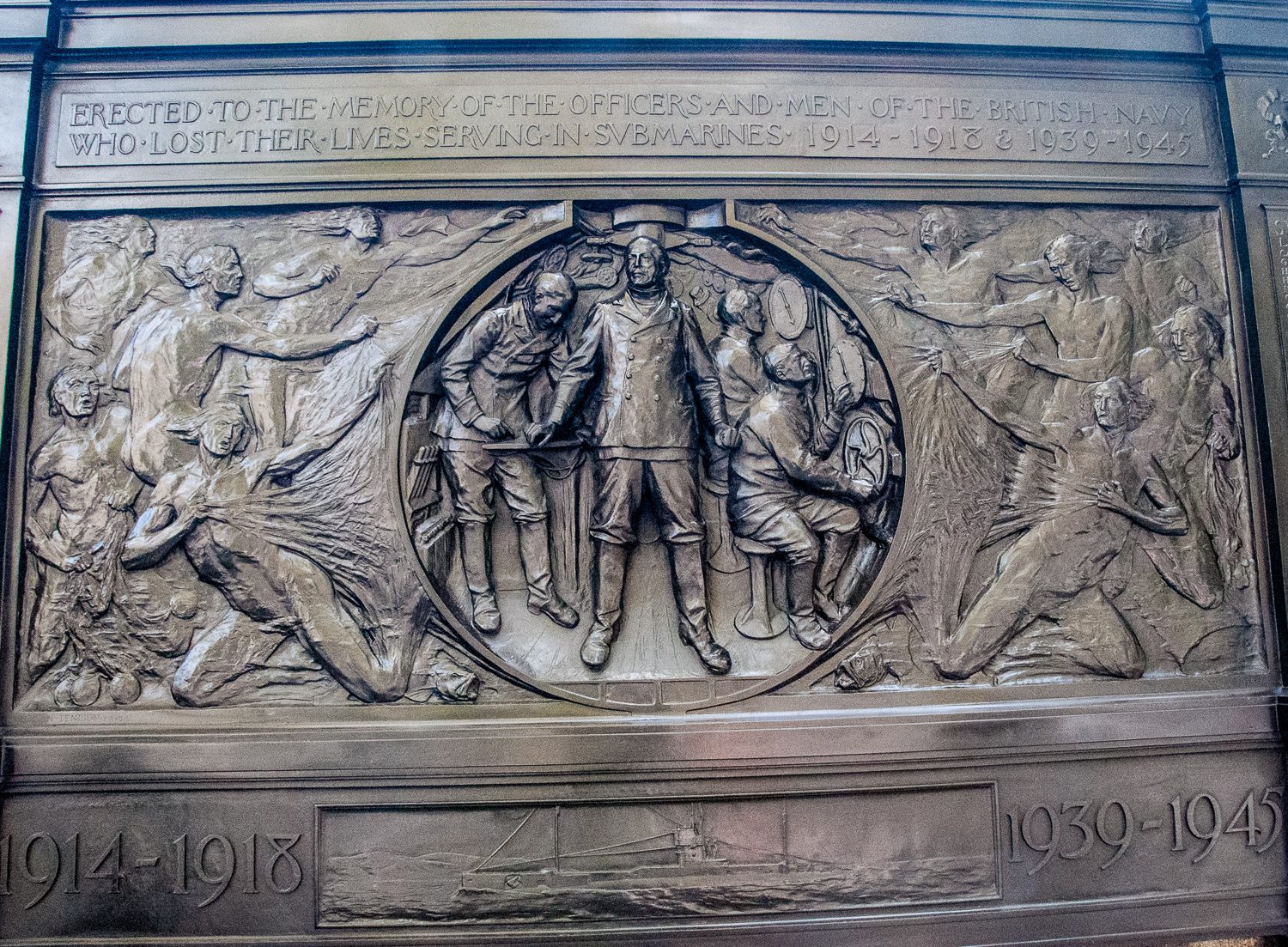
Sculptor: F B Hitch Architect: A H R Tenison Founder: E J Parlanti
The central figures recreate the scene set inside the submarine exaggerating it into a small, claustrophobic tunnel. The crew use charts and follow dials, the captain is braced at the centre with the periscope behind his head. Around the vessel a shallow relief depicts an array of sea creatures or mermen appearing to trap and haul the submarine in fishing nets, reminding us that the submarines were as much prey to the tempestuous elements as they were to the enemy.
On both corners are allegorical figures. Next to the list of vessels lost between 1914 and 1918, Truth holds up her mirror. Just further to the left in the picture are two of the 40 bronze wreath hooks in the form of anchors …
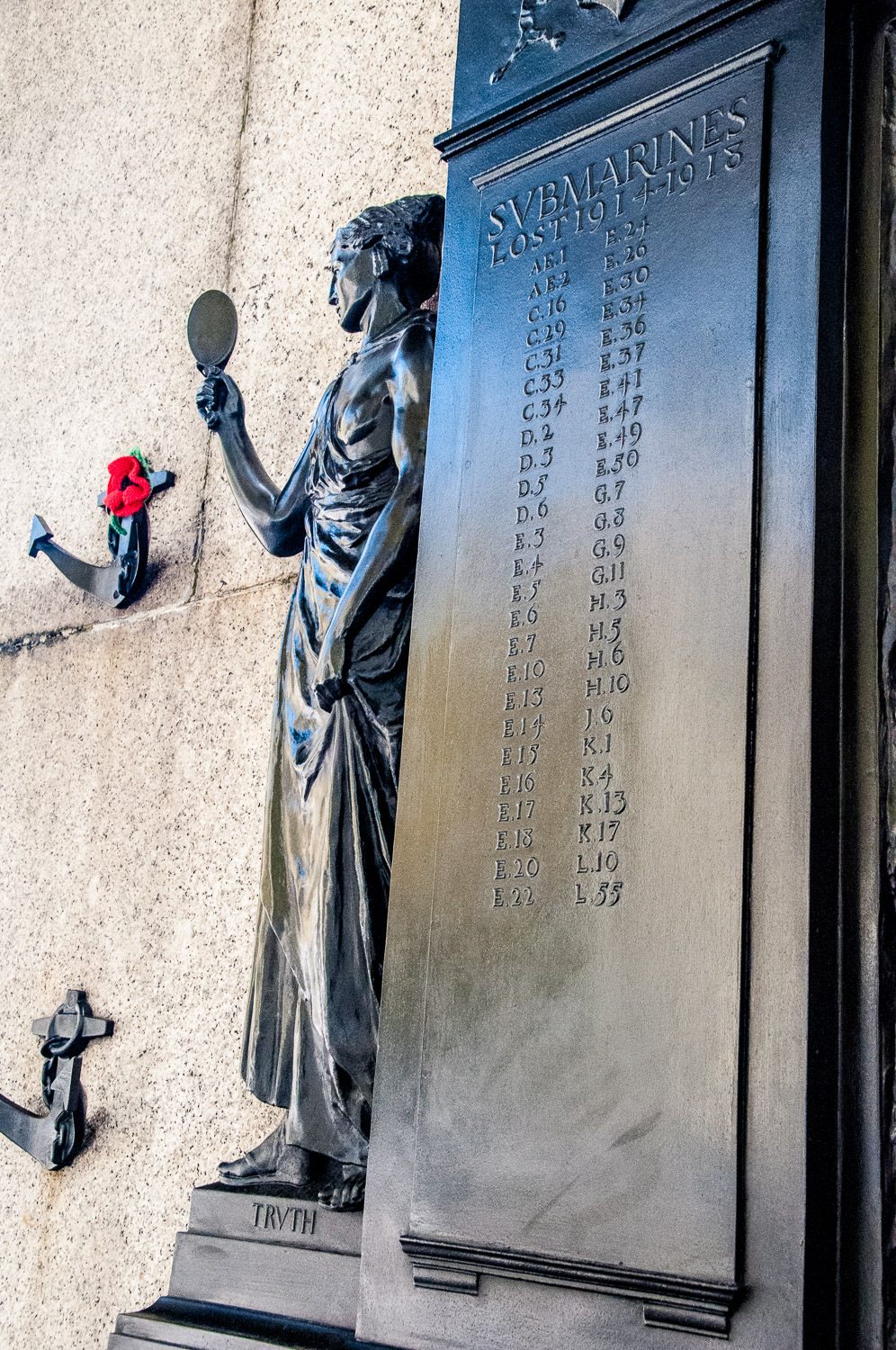
On the right, next to the vessels lost in the Second World War, Justice wears a blindfold and as usual holds a sword and scales …
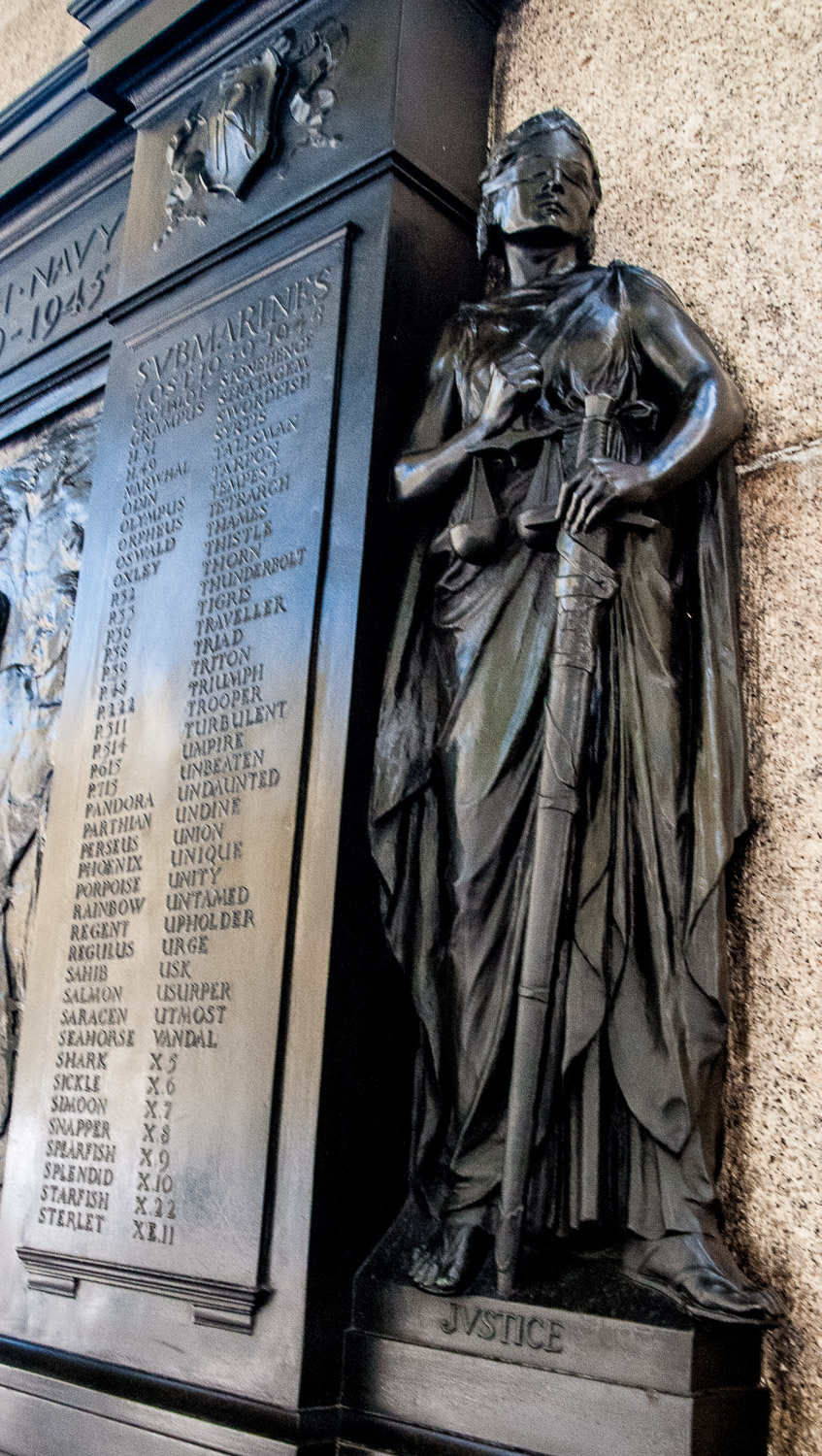
I have written about Justice and other representations in the City of the cardinal virtues in an earlier blog which you can find here.
And now to the Grand Avenue, Central Markets, Smithfield (EC1A 9PS) and this monument commemorating men, women and children who perished both overseas and nearby …
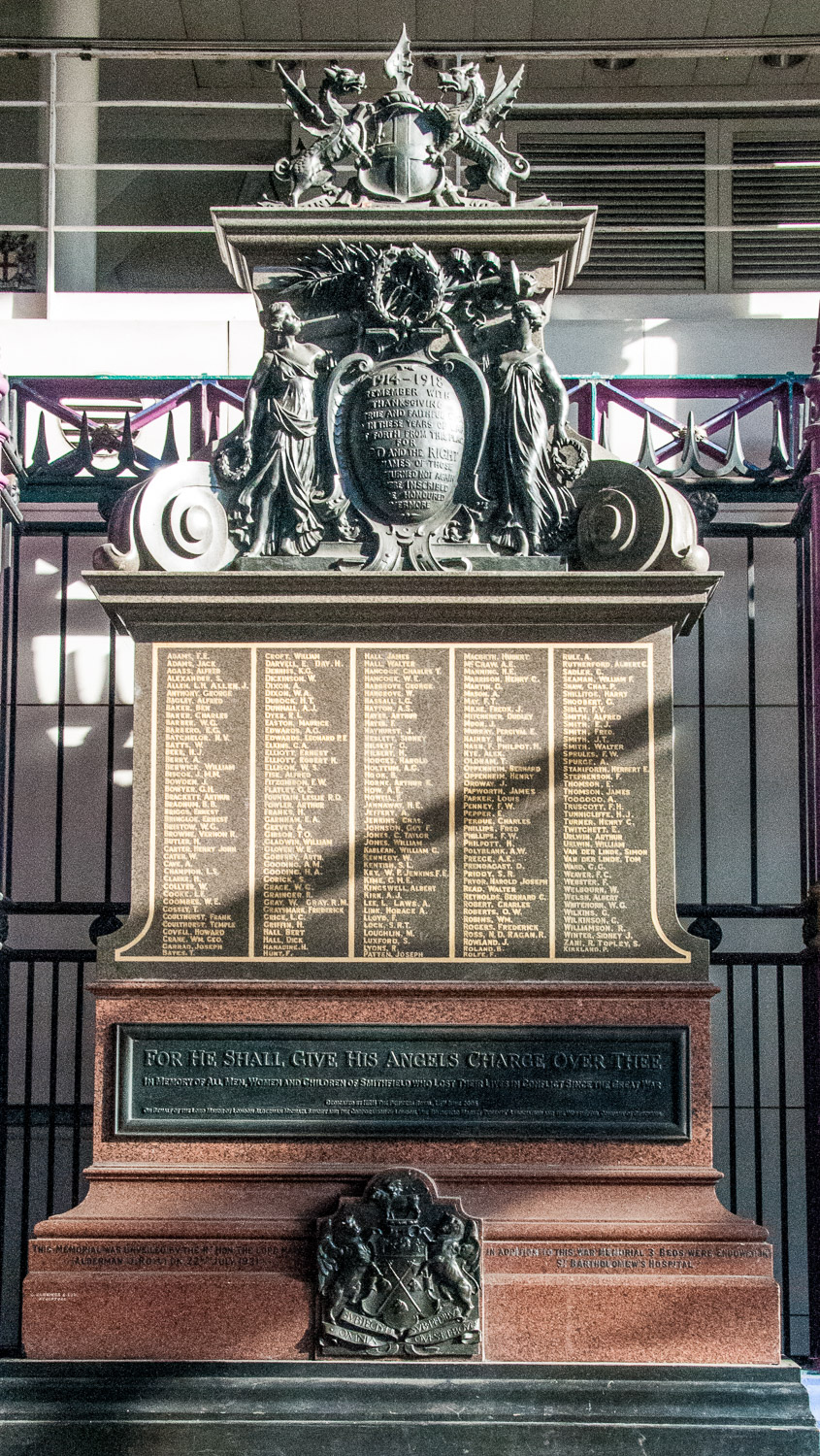
The original memorial (above the red granite plinth) is by G Hawkings & Son and was unveiled on 22 July 1921. 212 names are listed.
Between Fame and Victory holding laurel wreaths, the cartouche at the top reads …
1914-1918 Remember with thanksgiving the true and faithful men who in these years of war went forth from this place for God and the right. The names of those who returned not again are here inscribed to be honoured evermore.
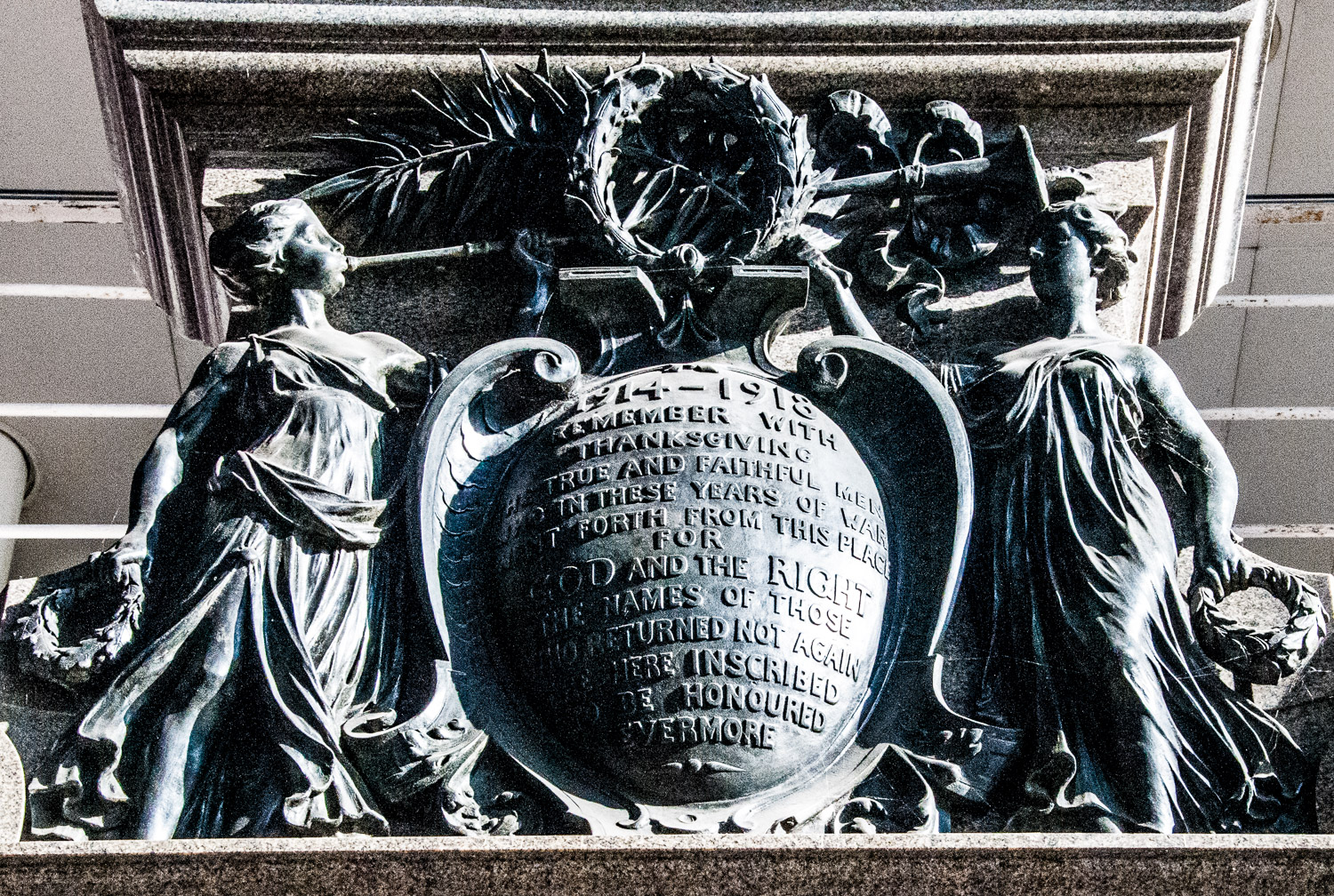
At 11:30 in the morning on 8th March 1945 the market was extremely busy, with long queues formed to buy from a consignment of rabbits that had just been delivered. Many in the queue were women and children. With an explosion that was heard all over London, a V2 rocket landed in a direct hit which also cast victims into railway tunnels beneath – 110 people died and many more were seriously injured.
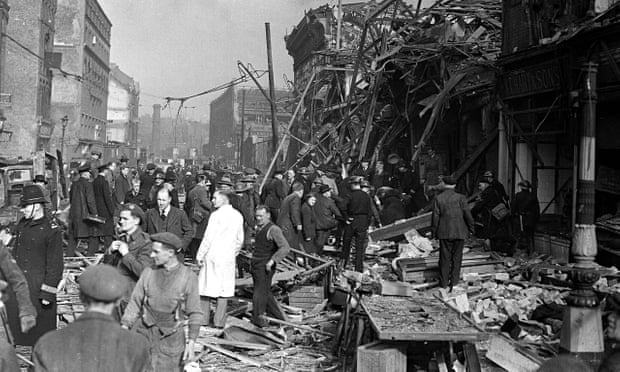
The aftermath.
The monument was refurbished in 2004/5 and unveiled on 15 June 2005 by the Princess Royal and Lord Mayor Savory. The red granite plinth had been added and refers to lives lost in ‘conflict since the Great War’. On it mention is made of the women and children although the V2 event is not specifically referred to.
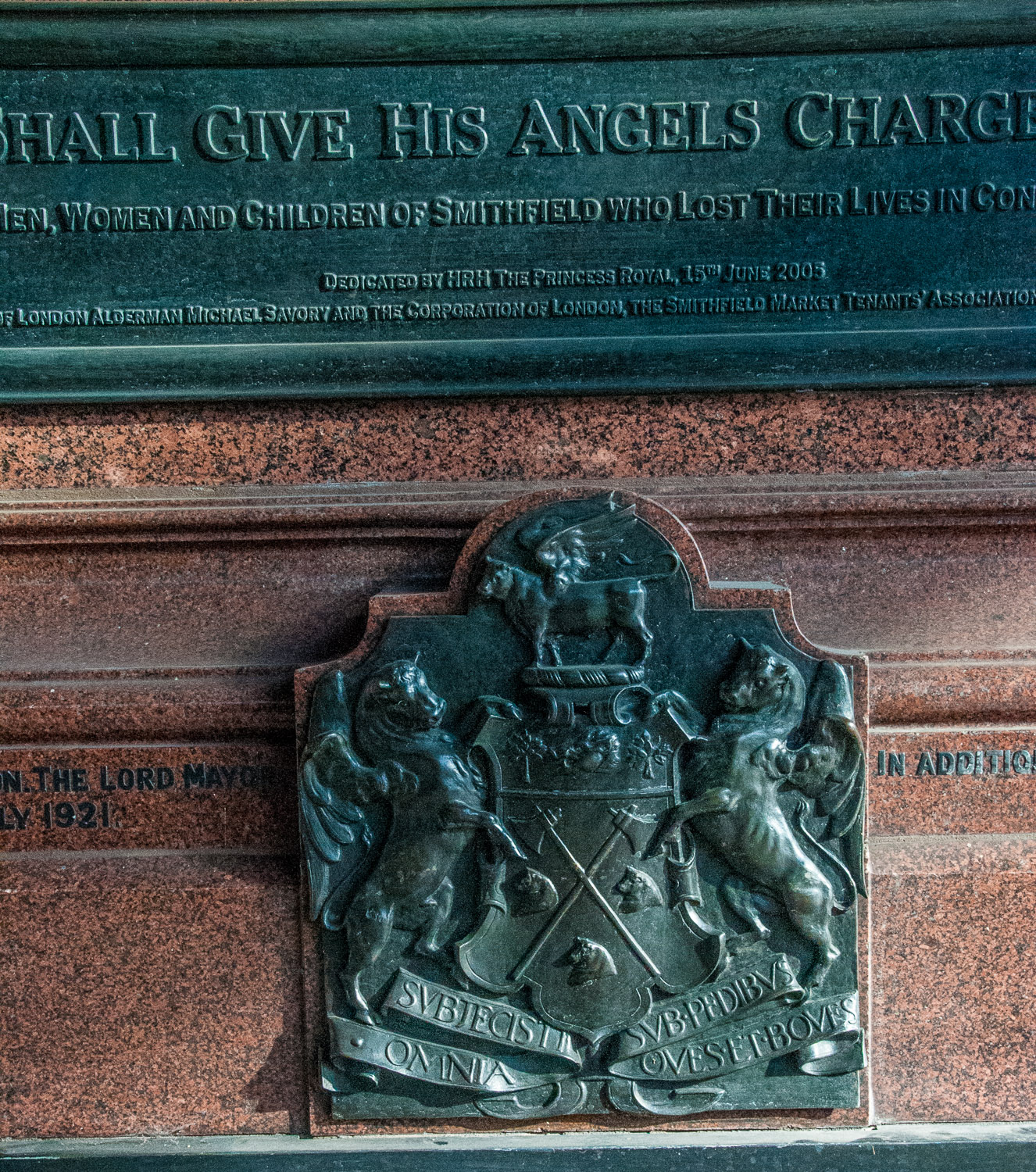
‘Thou hast put all things under his feet, all Sheep and Oxen’.
At the base is the coat of arms of the Worshipful Company of Butchers who helped to fund the refurbishment, along with the Corporation of London and the Smithfield Market Tenants’ Association.
Incidentally, the market was also hit by bombs dropped from a Zeppelin in the First World War – you can still see the shrapnel marks nearby on the walls of St Bartholomew’s Hospital …
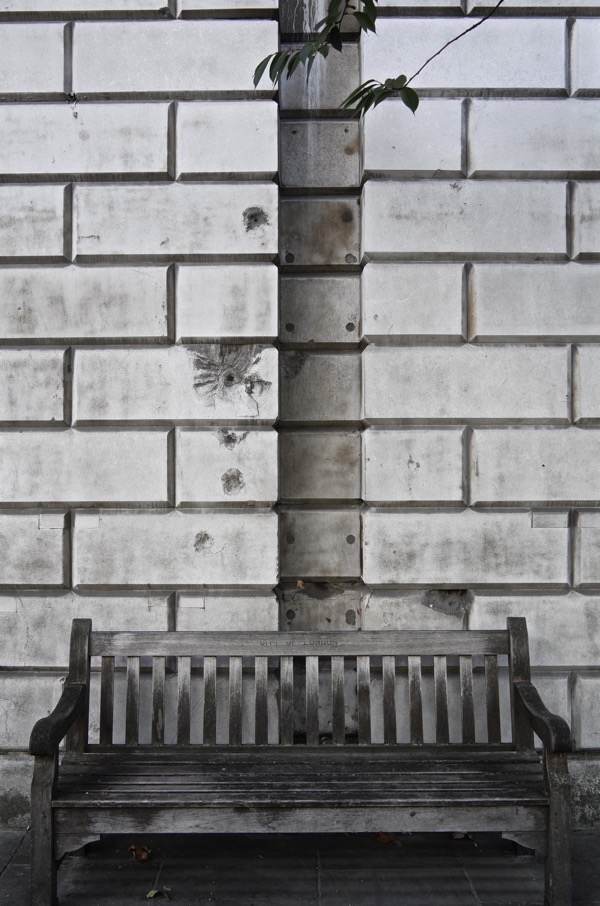
I have written about these and other scars of war that can be found around the City in an earlier blog: Bombs and Boundaries.
